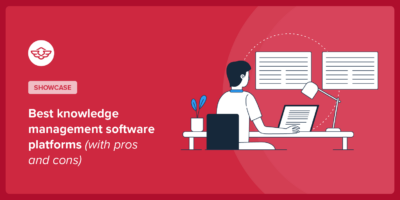9 Service Desk Automation Ideas to Streamline IT Support

The service desk handles countless routine issues, including password resets, ticket routing, status updates, reports, and ticket confirmations.
Want to automate them? So your team can work on actual issues?
In this guide, I will teach you how to break that cycle of repetitive IT tasks by introducing service desk automation.
Proven methods that will give you more room to breathe, and allow you to scale your service desk effortlessly.
In This Guide
- What Is a Service Desk?
- Why Automate the Service Desk? (Benefits)
- Tools to Power Your Service Desk Automation
- 9 Service Desk Automation Ideas (and How to Implement Them)
- 1. Enable Self-Service with a Knowledge Base
- 2. Deploy a Chatbot or Virtual Assistant for Tier-1 Support
- 3. Automatic Ticket Creation from Emails or Chats
- 4. Intelligent Ticket Routing and Assignment
- 5. Workflow Automation for Common Requests
- 6. SLA Alerts and Escalations
- 7. Automatic Customer Satisfaction Surveys and Feedback
- 8. Use Canned Responses and AI-Assisted Replies
- 9. Schedule Reports and Analytics Automation
- 1. Enable Self-Service with a Knowledge Base
What Is a Service Desk?
A service desk is the central hub where all your IT support requests land. It’s the frontline of your IT department—the place where users contact for help with tech issues, service requests, and questions.
A well-run service desk ensures smooth IT operations by offering fast, accurate support across the organization.
By using advanced software, we can automate most service desk tasks. The result? Your team will spend less time on grunt work and more time on the problems that truly require human understanding.
Why Automate the Service Desk? (Benefits)
Automating your service desk can feel like flipping on autopilot for the boring stuff. Here are some key benefits of service desk automation:
- Faster Responses and Resolutions: Automation can eliminate waiting times for common requests. Which can be handled by AI chatbots.
- 24/7 Support Coverage: Your IT support team might not be there to help around the clock, but tools like chatbots or self-service portals are.
- Reduced Workload and Costs: Reduced Workload and Costs: After automating most of the tasks, you will need fewer staff to manage your support, hence the lower cost.
- Consistency and Fewer Errors: Automation follows the procedure exactly each time, reducing the chance of errors. And provides consistent results every time.
It’s no wonder a majority of IT leaders view automation as essential. In fact, 66% of small and mid-sized organizations say automation is critical to running their business, and you should invest in it too.
Tools to Power Your Service Desk Automation

We rigorously test and research every product that we recommend through HeroThemes. Our review process. We may also earn a commission if you make a purchase through our links.
Without the proper tools or software, it’s impossible to automate your service desk processes. Here are a few tools that can help you on your automation journey.
1. Heroic Inbox – Help Desk software
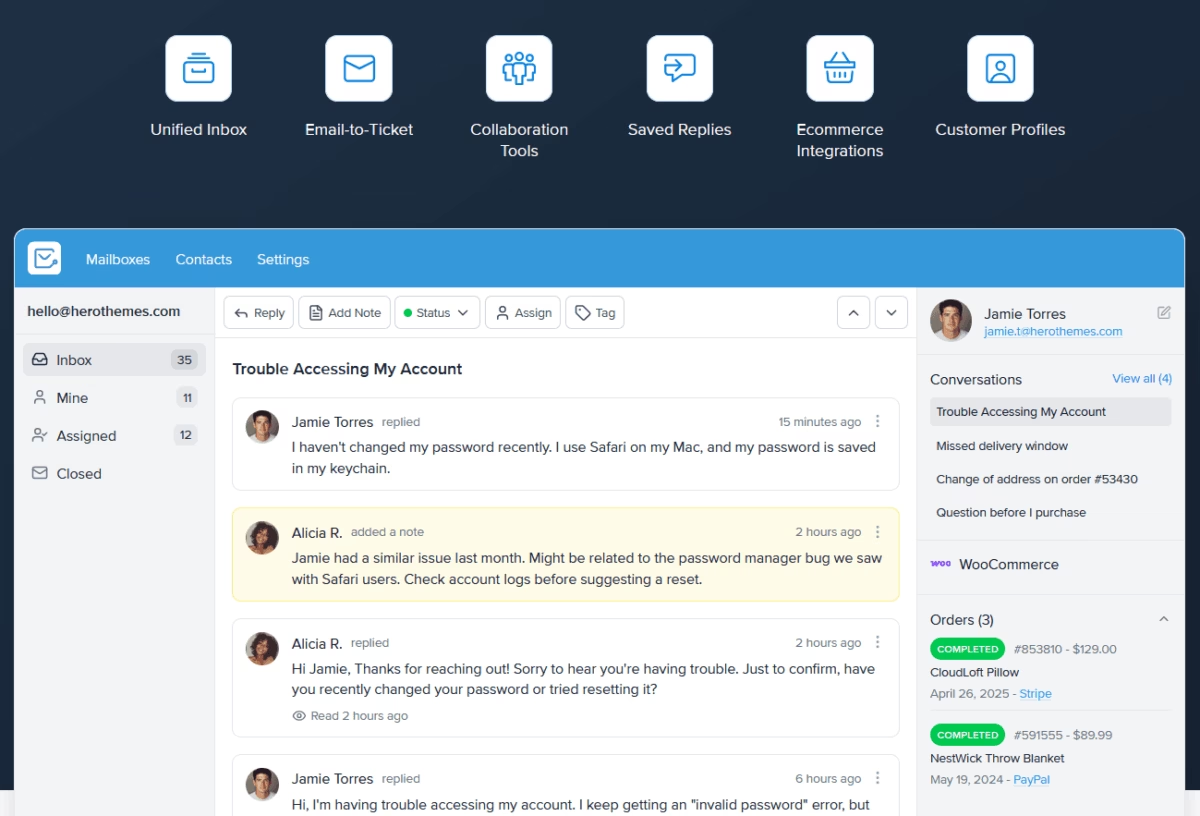
Heroic Inbox is a handy helpdesk software that transforms WordPress into a support ticket system.
It’s excellent for email integration. It can automatically convert emails to tickets and help you manage it with a shared inbox.
Automation features of Heroic Inbox:
- Auto-responders: for instance, sending an immediate “Got your request!” email.
- Workflow automation: create smart workflows to automate most manual tasks. Say, a ticket contains text about refund or pricing info, then based on that trigger it will automatically be assigned to the respective agent. Similarly, you can set up multiple workflows related to priority, deadline, status, agent, so on.
- Automated reports
- Canned responses or saved replies
- Integration with eCommerce plugins like WooCommerce to retrieve customer details alongside ticket conversations.
- History of past customer interactions with the service desk.
Heroic Inbox pricing starts at just $79 per year. This supports unlimited users and tickets, making it one of the affordable help desk software to start with.
2. Heroic Knowledge Base and Heroic AI Assistant
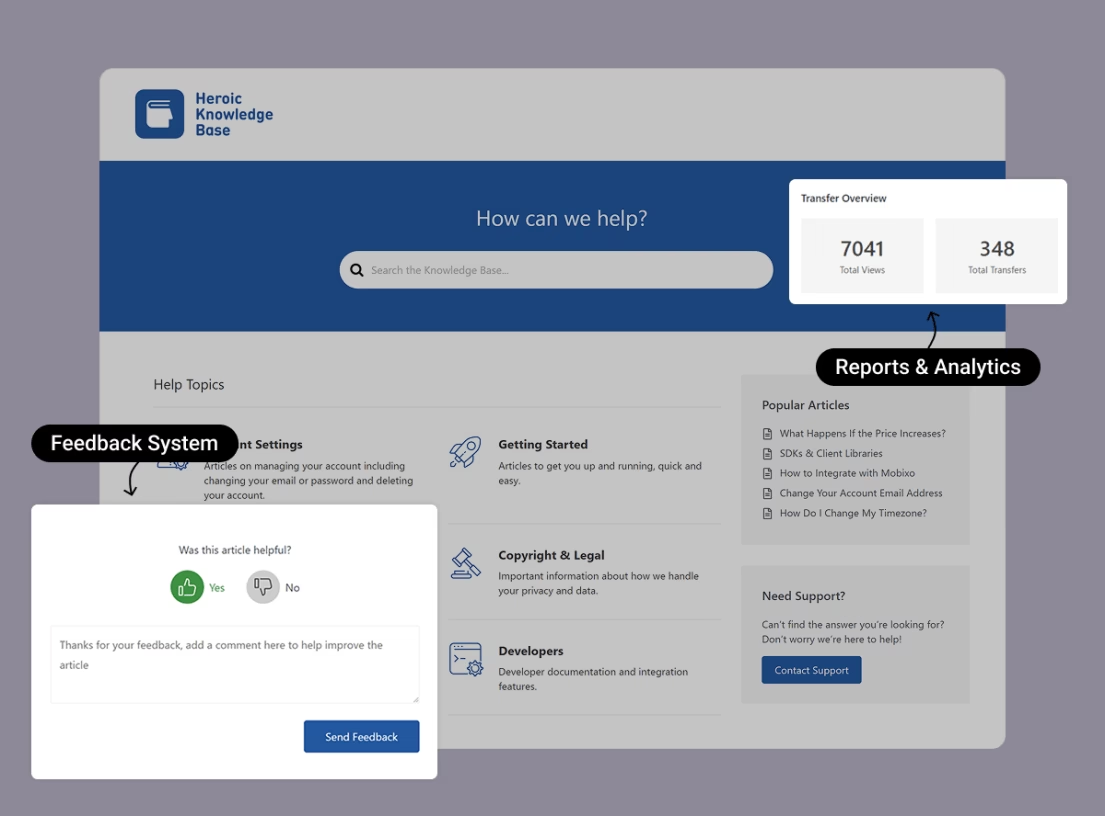
For the self-service, Heroic Knowledge Base (Heroic KB) is purpose-built to create a searchable, user-friendly knowledge base on your site.
Automation features of Knowledge Base:
- Create a self-service portal for customers and employees.
- AI-powered assistant to answer questions using your knowledge base content.
- Automated feedback collection and reports
Heroic KB pricing starts at $67 per year.
9 Service Desk Automation Ideas (and How to Implement Them)
Here are ten practical service desk automation ideas. Even implementing a few of these ideas can make a huge difference in efficiency and service quality.
1. Enable Self-Service with a Knowledge Base
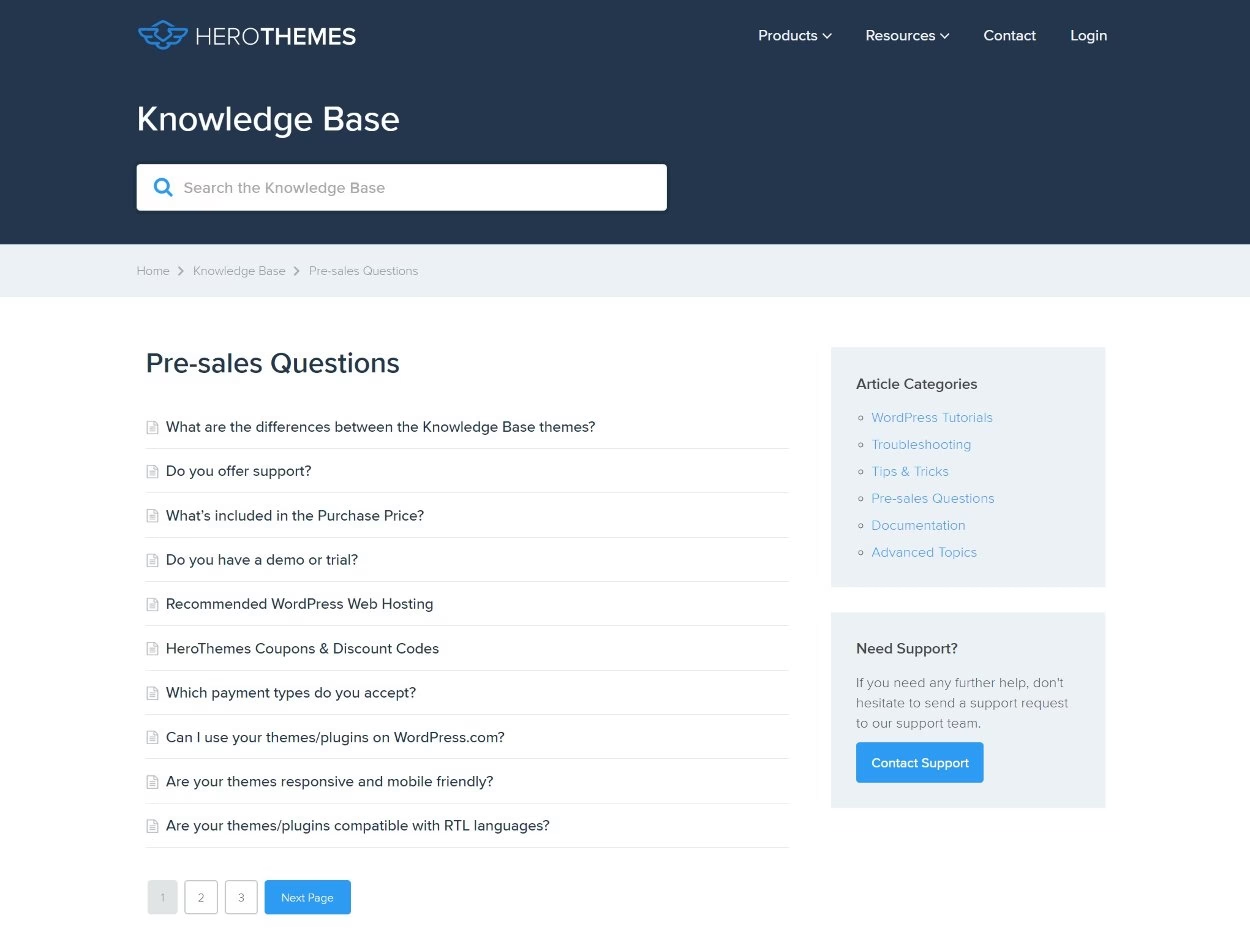
Empower your users to solve issues themselves by simply providing a rich knowledge base or FAQ.
This is one of the most effective automation strategies, which completely takes the human agent out of the loop entirely for many inquiries.
You create articles or guides for common problems (password reset steps, VPN setup, software how-tos, etc.), and users can find answers without opening a ticket.
Follow these steps to create a self-service portal:
Step 1: Create a knowledge base portal
Modern knowledge base tools like Heroic Knowledge Base (Heroic KB) makes this super-efficient with features like:
- Instant search suggestions and organized categories
- AI integrated chatbot
- Feedback system
- Analytics and reports
- User restriction
And the best part? It will only cost you $67 per year.
Step 2: Add your questions and answers
Start by populating a knowledge base with FAQs and solutions to the top 10–20 issues your service desk handles, and categorize the content logically (e.g. by software, account issues, hardware).
Step 3: Share and optimize
Make sure the portal is easily accessible. The best place for this would be to add a link to the knowledge base or help center from the main menu.
And don’t just create and forget about the knowledge base:
- Keep adding new guides and questions and answers.
- Update old content based on user feedback.
- Encourage users to use a self-service portal by pointing to specific guides when you get a ticket.
Over time your users will have a reliable self-service portal that can solve their problems, and help you focus on important issues.
Furthermore, check out our complete guide, “How to Build a Self-Service Portal,” to learn more.
2. Deploy a Chatbot or Virtual Assistant for Tier-1 Support
The use of chatbots for customer service and support is growing rapidly, as they’re incredibly useful for automating basic support queries and helping users navigate or find information.
Especially, an AI-powered virtual assistant or chatbot that can greet users on your support portal or Slack channel and answer common questions through conversation.
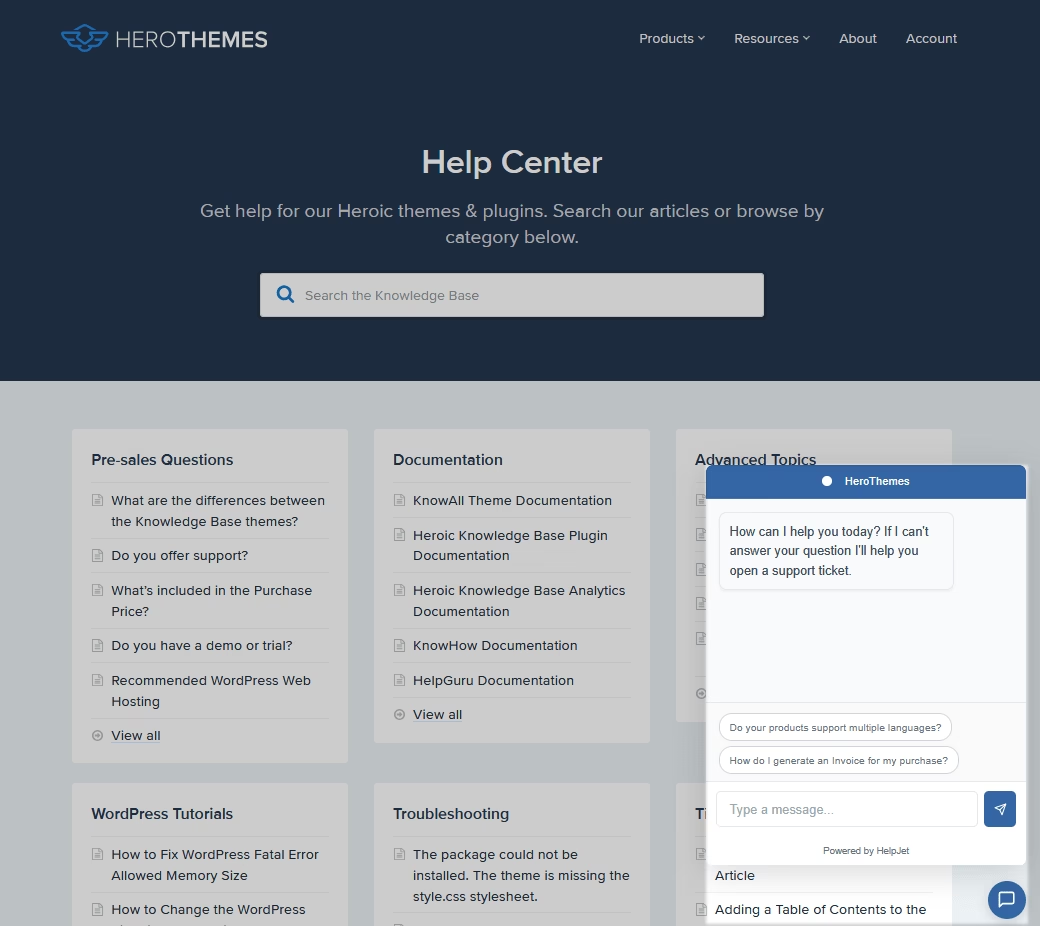
The basic workings of chatbot automation:
- These bots use your data (knowledge base content) to provide accurate and consistent information.
- 24/7 coverage
- Multilingual support
To set up a chatbot, you have options ranging from simple rule-based bots to advanced AI bots.
If you have used Heroic Knowledge Base (from the previous step) to create your self-service portal, it comes with an AI integrated chatbot. Just go to settings, and enable it.
Pro tip: Don’t use the chatbot as a way to completely avoid having support agents. If the chatbot can’t answer a question, provide users with the option to speak with a support representative.
Explore:
Practical Chatbot Use Cases and Examples to Learn From
11 Best WordPress AI Chatbot Plugins (Mostly Free)
10 AI Chatbots for Customer Service for 2026
3. Automatic Ticket Creation from Emails or Chats
This idea is about capturing requests wherever they come in and logging them in your system without human intervention.
With tools like Heroic Inbox, any email to your support address can become a ticket instantly, threading all subsequent replies together.
Automating this part of the service desk offers significant benefits:
- Turn incoming messages from various channels into tickets automatically so nothing falls through the cracks.
- Each ticket is trackable and provides a collaborative environment for teamwork.
- Automation of ticket management. This includes assigning agents, setting priorities and deadlines, and updating ticket statuses.
Most modern help desk solutions support email-to-ticket conversion. Typically, you just need to configure an inbound email address to your help desk system.
4. Intelligent Ticket Routing and Assignment
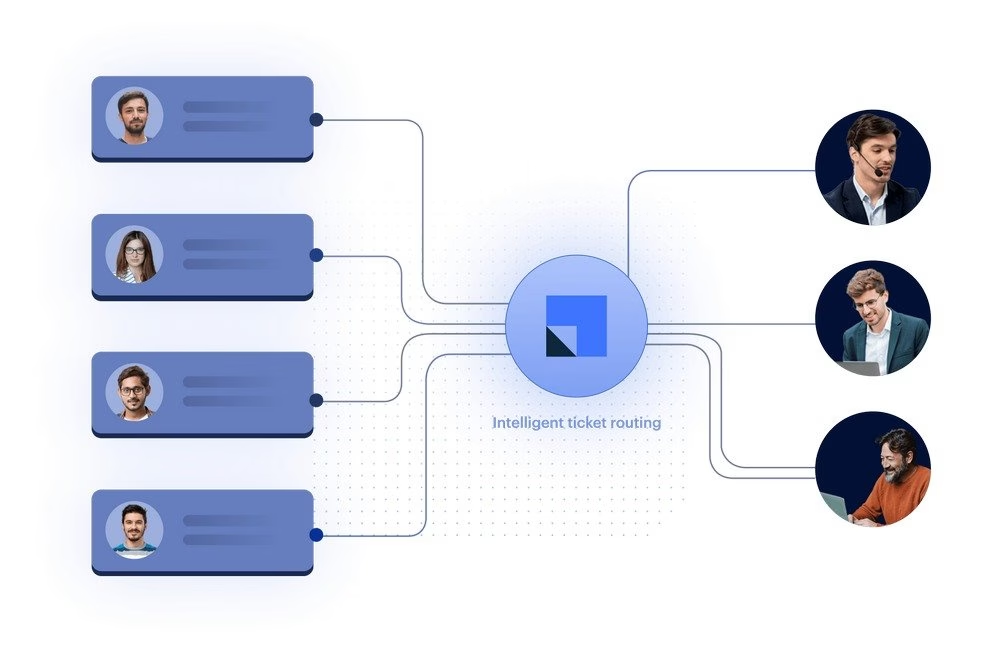
Not all tickets are equal, and figuring out who should handle each one can be a job in itself.
Automation can take over this decision-making with rule-based or AI-driven ticket routing.
The logic here is: when a ticket comes in, have the system automatically assign it to the right team or technician based on criteria like issue category, keywords, or workload.
For example, you have Level 1 support for general issues and a specialized Network team for network-related incidents. Here you can set up a rule: if a ticket’s category is “Network” or the description contains “VPN” or “router”, auto-assign to the Network team.
Similarly, you may want to mark VIP user tickets as high-priority.
Setting this up usually involves using built-in features of your helpdesk system (if your system allows).
For an advanced touch, some platforms use AI to auto-tag and route tickets. They analyze the text of incoming requests and predict the category or urgency.
5. Workflow Automation for Common Requests
Certain service desk “tickets” aren’t break-fix issues but requests that follow a predictable process. For example:
- Employee onboarding (new hire account setup, equipment provisioning)
- Offboarding
- Software access requests
- Change approvals
These kinds of processes involve multiple steps often carried out by different people. Which is the best-case scenario for automation using predefined workflows.
Automating the new employee onboarding process
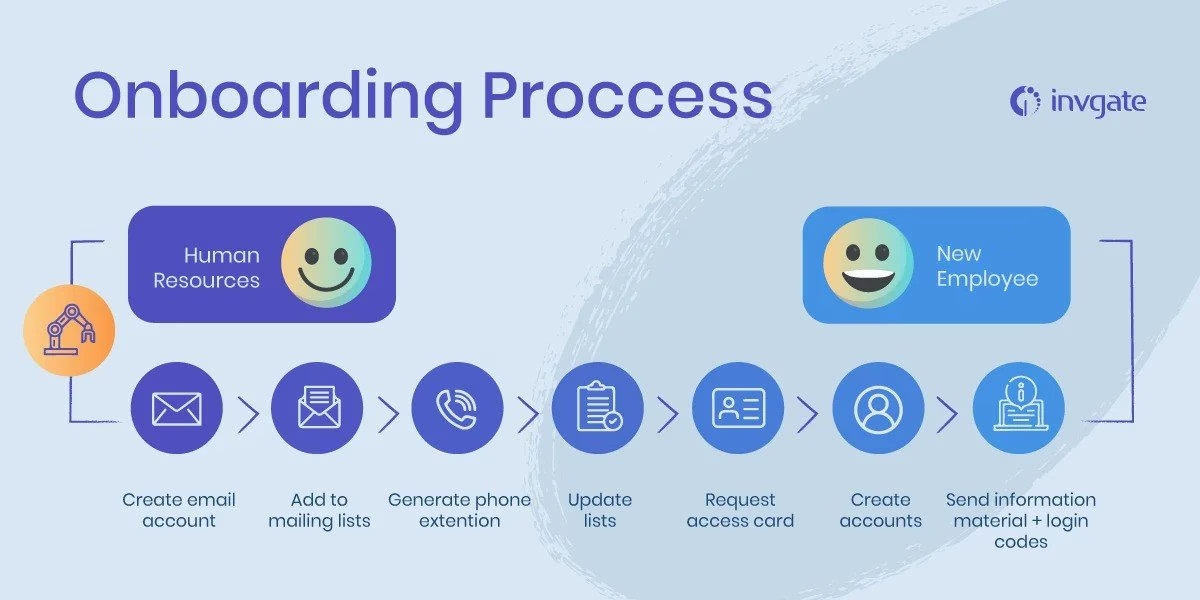
During the onboarding process, instead of having the IT department manually coordinate with other departments each time a new employee joins, you can use a workflow automation tool to handle it.
For example, when HR submits an onboarding request (a trigger), an automated workflow kicks off:
- It creates tasks for IT to set up the user’s account, email, and VPN access.
- Another task to prepare a laptop and desk for Facilities.
- An approval step for software licenses from the IT manager.
Each task gets assigned and even notified automatically.
This removes the manual process of creating tasks, setting up accounts, sharing necessary documents, following up, and more. Potentially speeding up the hiring process.
Now, imagine that you set up similar workflows for all the other tasks. Including onboarding, offboarding, leave management, and so on. The potential benefits from automation here is really huge.
To set up this kind of service desk automations, use automation platforms like Zapier.
6. SLA Alerts and Escalations
Service desks often operate under SLAs (Service Level Agreements) or at least internal targets. Like first response within 4 business hours, or resolution within 3 days for certain priorities.
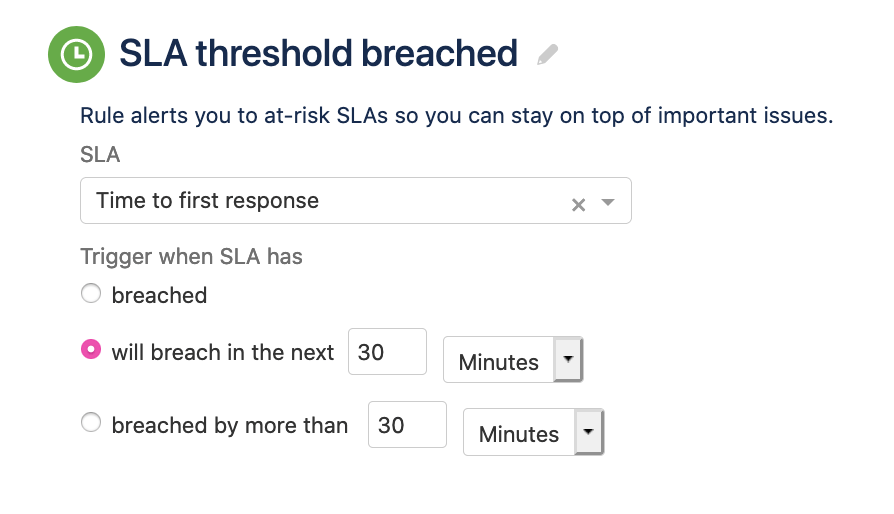
Instead of manually watching the clock, let automation monitor these timelines and alert or escalate issues that are at risk of breaching.
Here’s how it works:
You set rules such that when a ticket has sat unanswered for, say, 3 hours, the system automatically pings the assigned agent or sends a reminder email. You can escalate further; if it hits 4 hours with no response, maybe notify a supervisor or reassign to a backup team.
Similarly, if a high-priority incident isn’t resolved within 24 hours, automatically increase its priority or trigger an escalation workflow.
Most service desk software with SLA features support automated actions on breaches or percentage of SLA elapsed, and implementing this is usually straightforward.
In addition to in-system alerts, use automated customer notifications as part of this idea. Say, when a ticket is taking longer than usual, you might automatically shoot the end-user an email: “Hey, we haven’t forgotten you, but this is taking longer to resolve. We’re on it.”
With this service desk automation, it’s all about keeping everyone informed and stress levels down.
7. Automatic Customer Satisfaction Surveys and Feedback
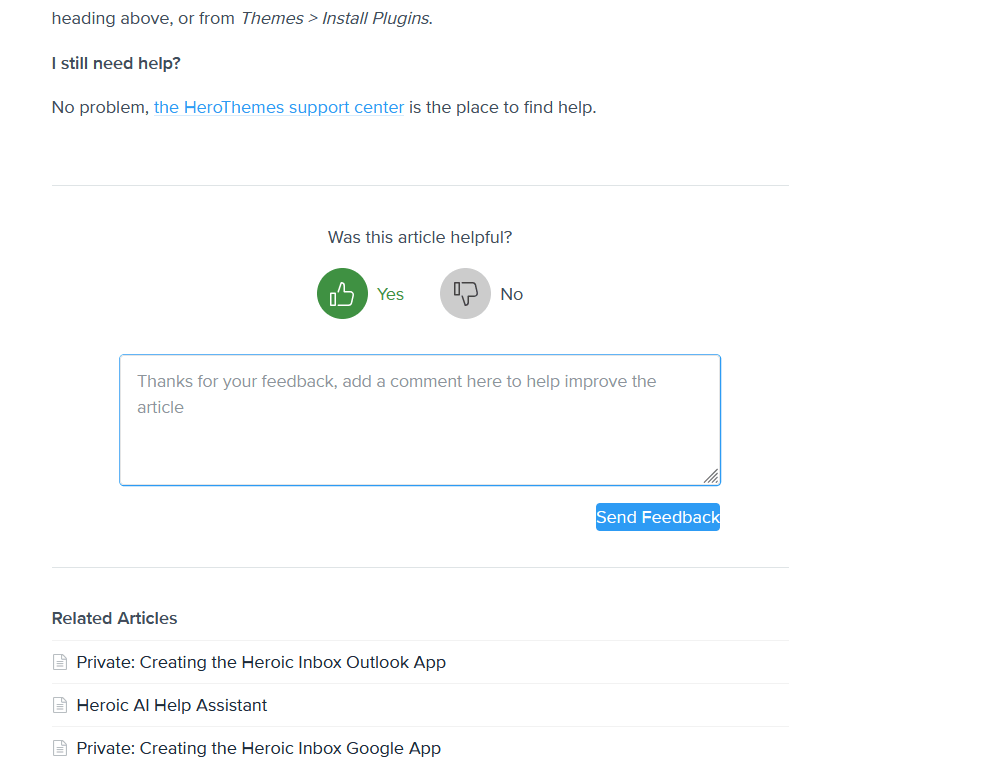
Getting feedback from users is a great way to know if your self-service or customer service was on point or not.
Which is often automated.
When a ticket is marked closed (or resolved), have an automation send an email to the requester like “How did we do? Please rate this solution 👍 or 👎 (or 1-5 stars)”.
Service desk platforms like Heroic KB and Heroic Inbox makes it easy to automate the feedback collection process.
8. Use Canned Responses and AI-Assisted Replies
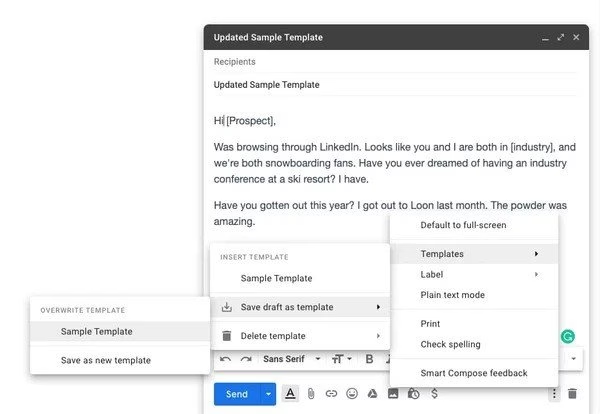
Service desk communications often involve answering the same questions. You can use canned responses or premade templates for that.
Say, a request about refund details (which your agent already answers hundreds of times), you can easily create a templated response for such queries.
Instead of typing the same response every time, agents can now use a premade template and get done with it in just a few clicks.
This reduces agents’ frustration from doing the same task every day, and also increases the response time.
Take it a step further with AI-assisted replies
With AI advancing every day, it can now be used to draft responses based on the context of the message.
The AI is backed by user-provided data (knowledge base for example), from which it can generate appropriate responses or suggest the next action.
This is perfect if sending canned responses sounds very generic to you.
9. Schedule Reports and Analytics Automation
The information you gain from tracking service desk performance metrics such as the number of tickets, resolution times, backlog, and customer satisfaction trends are very valuable.
Gathering this data manually every week or month can be a drag. With automation, you can have regular reports generated and delivered to your inbox and to other stakeholders.
Most service desk tools have reporting features where you can define such reports and then schedule them to email out on a cadence.
Set it up once, and every Monday at 8am you could get a fresh PDF or Excel of last week’s stats.
Benefits of schedule reports and analytics automation?
- These reports help facilitate data-driven decision-making. As a leader, you get a clear view of your service desk situation.
- Automation guarantees consistency, and helps catch anomalies early.
- Reduced bias in reporting
- Reduced manual workload
Share these reports with the team automatically too. When everyone sees the metrics regularly, it creates transparency and accountability.
Conclusion: Get Started with One Idea at a Time
It is best to start with a few automations, test them, and then work on more.
Implementing all the service desk automation ideas we discussed at once might impact the quality of your support.
The safest and proven service desk automation ideas are creating a self-service portal, using canned responses, and utilizing shared inboxes, so start with them.
Use automation tools that align with your company’s size and technological capabilities.
Tools that are designed for enterprises will definitely not work for small businesses when you consider running cost, feature complexity and usefulness.



